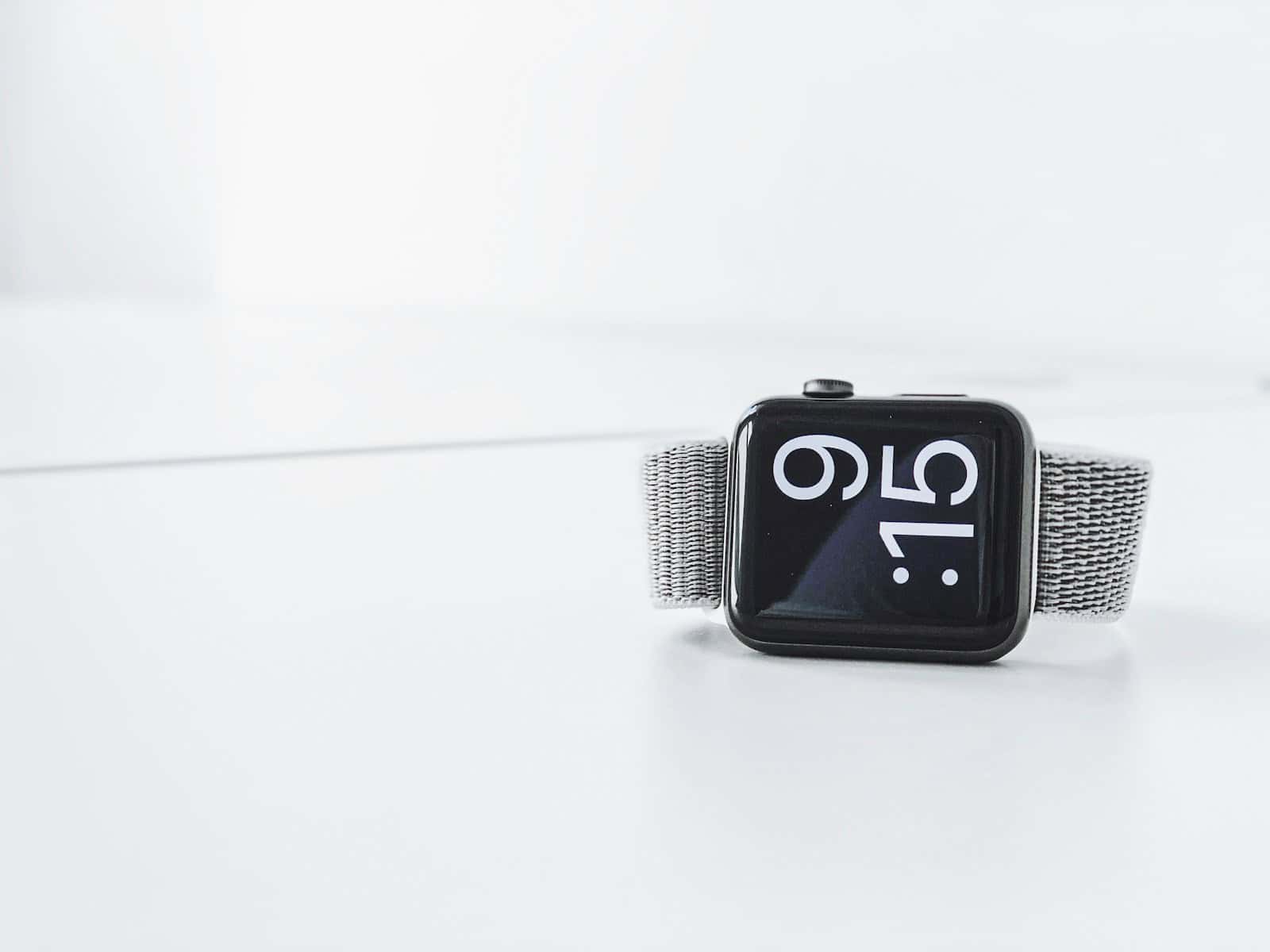Got your new Apple Watch and wondering how to unlock its full potential? You’re not alone. While the Apple Watch is great for telling time, tracking your fitness, and delivering notifications, it also hides a ton of features that can streamline your day, improve your health, and make your tech experience more seamless.
Whether you’re wearing an Apple Watch SE or the latest Apple Watch Ultra, these 10 tips go beyond the basics—offering power-user tricks and customization options that will make your watch feel truly personal.
1. Customize Your Watch Face for Functionality
The watch face is the control center of your Apple Watch. Customizing it isn’t just about aesthetics—it’s about efficiency. Complications let you access key data and apps with a single tap.
Tips to Try:
- Long-press the watch face, tap Edit, then swipe to customize style, color, and complications.
- Choose Modular, Infograph, or Portraits face types for maximum data.
- Add complications for:
- Battery life
- Weather forecasts
- Heart rate
- Calendar events
- Third-party apps like Things, CARROT Weather, or Strava
Pro Tip: You can save multiple faces for different scenarios—one for work, one for workouts, and one for sleep.
2. Use Siri Hands-Free
The Apple Watch makes Siri more useful than ever, especially when your hands are full. You don’t even have to say “Hey Siri” if you enable Raise to Speak.
How to Use:
- Enable it in Settings > Siri > Raise to Speak
- Just lift your wrist and talk—no wake phrase needed
Things Siri Can Help With:
- Set a timer while cooking
- Send a quick text message
- Start a workout
- Control smart home devices
- Get directions or weather
This is especially helpful with the Series 9 and Ultra 2, which have on-device Siri for faster responses.
3. Unlock Your iPhone and Mac Automatically
Skip the password and use your watch to unlock your other Apple devices securely. It’s quick, safe, and perfect when wearing a mask or gloves.
How to Enable:
- On iPhone: Settings > Face ID & Passcode > Unlock with Apple Watch
- On Mac: System Settings > Touch ID & Password > Use Apple Watch to Unlock
What It Does:
- Unlocks your iPhone when Face ID is obstructed
- Wakes and logs into your Mac when you’re near it
It even works for approving app installations and system settings changes on your Mac.
4. Silence Calls with a Simple Gesture
Don’t scramble to mute a call in a meeting or theater. Just use your hand.
To Activate:
- Go to Watch app > Sounds & Haptics > Cover to Mute
- When your watch rings or dings, cover the display with your palm for 3 seconds
Bonus: The same gesture works for notifications and alarms.
This subtle move keeps interruptions discreet and professional.
5. Find Your iPhone Fast (Even in the Dark)
Lose your phone again? Your watch can ping it—and even flash the LED light if needed.
How To Do It:
- Swipe up to access Control Center
- Tap the iPhone ping icon
- Hold it to make your iPhone flash its LED and ring
This works even if your phone is on silent, making it great for late-night misplacements.
6. Use Workout Auto-Start and Auto-Stop
Forget to start a workout? Your watch has your back. It’ll detect activity and prompt you to start or stop tracking.
How To Turn It On:
- Go to Watch app > Workout > Start/End Workout Reminder
Supported Activities Include:
- Walking (indoor and outdoor)
- Running
- Swimming
- Elliptical
- Rowing
- HIIT
The Apple Watch will even credit retroactive minutes if you confirm the activity.
7. Set Up Sleep Tracking and Wind Down Mode
Apple Watch now natively tracks your sleep, including time in bed and estimated time asleep. But the Wind Down feature adds mindfulness to your nightly routine.
How To Set It Up:
- In the Health app on iPhone, go to Sleep > Full Schedule
- Choose your bedtime and wake-up time
- Enable Wind Down to turn on Do Not Disturb and trigger custom shortcuts
Helpful Additions:
- Integrates with Focus mode
- Enables sleep reminders
- Monitors sleeping heart rate and respiratory rate (Series 8 and later)
Add a sleep watch face or shortcut to a meditation app for a calmer night.
8. Take Screenshots for Sharing or Saving
Want to show off your fitness record or share a custom watch face? Take a screenshot directly from your wrist.
How To Enable:
- Open Watch app > General > Enable Screenshots
How To Take It:
- Press the Digital Crown + Side Button at the same time
Ideas for Use:
- Share workout records
- Save unique watch face setups
- Document health metrics
Screenshots are saved in your iPhone’s Photos app.
9. Use Compass Waypoints & Backtrack (Series 6 and Later)
Great for hikers and travelers, Compass Waypoints let you mark important spots, while Backtrack helps you retrace your steps.
How To Use:
- Open the Compass app
- Tap the flag icon to set a waypoint (like your tent or car)
- Tap Backtrack (the footstep icon) to track your path in real time
When It’s Useful:
- Camping or hiking in unfamiliar areas
- Parking in a massive lot
- Exploring a new city on foot
Works best with Apple Watch Ultra or any watch running watchOS 9 and newer.
10. Share Watch Faces with Friends
You spent time creating the perfect watch face—why not share it?
How To Share:
- Long-press your watch face
- Tap the Share icon
- Choose a contact or use AirDrop
What Gets Shared:
- The design
- Color scheme
- Active complications (with app links if needed)
Great for recommending productivity setups, fitness faces, or custom designs with friends.
Final Thought:
The Apple Watch is more than a timekeeper—it’s a personal assistant, health coach, and productivity tool all in one. The more you explore its features, the more useful it becomes.
Key Takeaways
- Set up your watch face with useful complications to see important info at a glance.
- Clean your watch regularly and adjust the fit to prevent skin irritation.
- Turn off unnecessary features like auto-launching apps to save battery life.
Getting Started with Your Apple Watch
Your new Apple Watch offers powerful features to enhance your daily life. The right setup ensures you’ll get the most from your device from day one.
Unboxing and Initial Setup
When you first open your Apple Watch box, you’ll find the watch, bands, and a charging cable. Remove the plastic wrap carefully and attach the band by sliding it into the groove until it clicks.
To turn on your watch, press and hold the side button until the Apple logo appears. Your watch will guide you through some initial questions about language and accessibility.
It’s best to turn off background apps and notifications at first. You can add these back as needed. This helps save battery life and keeps your experience simple.
Make sure to charge your watch before setup. The magnetic charger snaps to the back of the watch case. A green lightning bolt will show it’s charging properly.
Pairing with iPhone
To pair your Apple Watch, make sure your iPhone has Bluetooth turned on and is updated to the latest iOS. Open the Apple Watch app on your iPhone.
Follow these steps:
- Tap “Start Pairing” on your iPhone
- Point your iPhone camera at the watch face to scan the pattern
- Choose “Set Up as New Apple Watch” (or restore from backup)
- Sign in with your Apple ID when prompted
During setup, you’ll choose which wrist you wear your watch on and create a passcode for security. Your Apple ID links your watch to Apple services like iCloud and Apple Pay.
The setup will ask about apps to install. Start with just the basics—you can add more later through the Watch app on your iPhone.
Navigating WatchOS Interface
The Apple Watch interface uses simple gestures and buttons. The Digital Crown (the dial on the side) lets you scroll through content and press to go home.
Swipe up from the bottom for Control Center with quick settings. Swipe down from the top to see notifications. Swipe left or right to change watch faces.
You can pin widgets in the Smart Stack for quick access to your most-used features. Just turn the Digital Crown from your watch face to see your Stack, then hold any widget to pin it.
To customize your watch face, press firmly on the current face, then swipe to browse options. Tap “Edit” to change colors and complications (the small information displays).
The side button shows recent apps when pressed once and brings up Apple Pay when double-pressed. Hold it down to access emergency features or power off.
Customizing Your Watch Face
Your Apple Watch face can be personalized in many ways to match your style and needs. You can select from different designs, add useful tools, and set up how your watch looks when you’re not actively using it.
Choosing Watch Faces
The Apple Watch offers many face designs to fit your style and needs. To change your watch face, simply press firmly on the current face and swipe left or right to see options. You can also add new faces through the Face Gallery in the Watch app on your iPhone.
Want something more personal? You can set your own photo as a watch face. Open the Photos app on your watch or phone to select an image you love.
For those seeking truly unique designs, apps like Clockology let you create custom faces. Download it on both your iPhone and Apple Watch, then use the workspace feature to build your own design.
After adding faces to your collection, you can quickly switch between them. Enable the swipe feature by going to Settings > Clock and turning on “Swipe to Switch Watch Face.”
Adding Complications
Complications are small features that display information on your watch face. These useful tools show data like weather, fitness stats, calendar events, and more at a glance.
To add complications, press firmly on your watch face and tap “Edit.” Swipe left until you reach the complications screen. Tap the area you want to customize, then turn the Digital Crown to select a complication.
Different watch faces support varying numbers of complications:
- Infograph: Up to 8 complications
- Modular: Up to 6 complications
- Simple: Up to 5 complications
You can add complications from Apple’s built-in apps and third-party apps. Some popular options include:
- Weather conditions
- Activity rings
- Heart rate
- Battery level
- Calendar events
Arrange complications based on what information you check most often. Put your most important data in larger complication spots for better visibility.
Using Always On Display
The Always On feature (available on Apple Watch Series 5 and newer) keeps your watch face visible even when your wrist is down. This lets you check the time without raising your wrist or tapping the screen.
When in Always On mode, your watch face dims and updates once per minute to save battery. Some elements may simplify or disappear until you raise your wrist again.
You can customize how your watch behaves in Always On display:
- Go to Settings on your watch
- Tap Display & Brightness
- Select Always On
- Toggle the feature on or off
For privacy, you can hide sensitive information when in Always On mode. This includes notifications, health data, and certain complications that might contain personal details.
Battery tip: Always On display uses more power. If you need to extend battery life, consider turning this feature off temporarily through Control Center or Settings.
Mastering Notifications and the Control Center
Your Apple Watch puts powerful tools right on your wrist. Getting the most out of notifications and Control Center features can make your watch more useful and easier to use.
Managing Notifications
Notifications on Apple Watch keep you connected without needing to check your phone. To view notifications, swipe down from the top of the watch face. New users should know that notification settings can be managed through the Watch app on your iPhone.
When a notification appears, you have several options:
- Tap to open the related app
- Scroll down to see more details
- Swipe left to see action buttons
- Swipe right to dismiss
To avoid being disturbed, use Silent Mode by swiping up to open Control Center and tapping the bell icon. This makes notifications vibrate instead of making sounds.
For meetings or movies, Theater Mode stops the screen from lighting up when you raise your wrist. Your watch will only vibrate for alerts, keeping distractions to a minimum.
Customizing the Control Center
The Control Center on Apple Watch gives quick access to common settings and features. Open it by swiping up from the bottom of the screen while on the watch face.
Control Center includes useful toggles like:
- Wi-Fi and cellular connection status
- Battery percentage
- Airplane Mode
- Do Not Disturb
- Flashlight
- Water Lock (for swimming)
In watchOS 10, you can customize Control Center to fit your needs. Press and hold the bottom of the screen, then tap “Edit” to add, remove, or rearrange controls.
The most-used controls should be at the top for easy access. For example, if you often use the flashlight, move it to the top row so you can find it quickly in the dark.
Utilizing Communications Features
Your Apple Watch offers powerful ways to stay connected without pulling out your phone. These features help you respond to messages quickly and make calls right from your wrist.
Sending and Receiving Messages
The Apple Watch makes texting simple and fast. You can set up multiple “quick messages” that let you respond when you’re busy or can’t type.
To send a new message, press the Digital Crown to access your apps and tap the Messages icon. You can dictate your text, draw letters on the screen, or choose from emoji.
When messages arrive, just raise your wrist to view them. Responding is easy with:
- Default Replies: Tap to send pre-written responses
- Scribble: Draw letters one by one
- Voice-to-Text: Speak your message
- Emoji: Express yourself with images
You can customize your default replies in the Watch app on your iPhone. Go to Messages > Default Replies to add your most-used phrases.
For noisy environments, set haptic feedback in your watch settings so you’ll feel a tap when messages arrive.
Making Calls and Using Siri
Your Apple Watch lets you take calls without reaching for your phone. Press the side button to access recent contacts or use the Phone app to dial.
For hands-free use, Siri makes calling simple. Just raise your wrist and say “Hey Siri, call Mom” or whoever you need to reach. This works with a cellular or Wi-Fi connection.
During calls, you can:
- Adjust volume using the Digital Crown
- Transfer to iPhone with a tap
- Mute yourself when needed
- End calls quickly from your wrist
For privacy, connect Bluetooth headphones to your watch for calls. This works well when exercising or in public places.
Siri also helps with texts. Say “Hey Siri, tell Sarah I’ll be late” and your message sends instantly without typing.
Enhancing Your Health and Fitness
The Apple Watch offers powerful tools to transform your daily health routine. These features work together to track your activity, monitor vital signs, and help you reach your fitness goals.
Tracking Workouts with the Activity App
The Activity App is the heart of the Apple Watch fitness experience. It tracks your daily movement through three simple Activity Rings: Move (calories), Exercise (minutes), and Stand (hours).
To start a workout:
- Open the Workout app on your Apple Watch
- Scroll to find your activity type
- Tap to begin tracking
The watch tracks over 40 workout types including walking, running, swimming, and yoga. For outdoor activities, it uses GPS to map your route and pace.
Many users don’t realize the watch can automatically detect when you’re working out. If you forget to start tracking, it will send a reminder asking if you want to record your exercise.
To get more from your workouts, try the advanced metrics like heart rate zones, running power, and cadence for runners.
Monitoring Heart Health and Vitals
Apple Watch goes beyond simple fitness tracking to monitor important health metrics. The heart rate sensor checks your pulse throughout the day and alerts you to irregular rhythms.
Key health monitoring features include:
- ECG app: Records an electrocardiogram similar to a single-lead ECG
- Blood Oxygen app: Measures oxygen saturation in your blood
- Temperature sensing: Tracks wrist temperature during sleep
- Noise app: Warns when environmental noise might damage hearing
The watch stores this data in the Health app on your iPhone. This creates a comprehensive picture of your vital signs over time.
Many Apple Watch users have discovered health issues early thanks to these monitoring features. Remember to share important readings with your doctor.
Setting Up and Achieving Fitness Goals
Setting realistic goals is key to improving fitness with your Apple Watch. The default goals (600 calories, 30 minutes exercise, 12 stand hours) can be customized to match your fitness level.
To set personal goals:
- Open the Activity app on your watch
- Scroll to the bottom and tap “Change Goals”
- Adjust each ring target to suit your needs
Try using the Competitions feature to challenge friends to a 7-day Activity contest. This friendly competition often boosts motivation.
The Fitness+ subscription service offers video workouts that sync with your watch. Your heart rate and Activity Rings appear on screen during workouts.
Many users find success by using the Reminders app to set up movement alerts or schedule workout times. Small, consistent steps lead to the best long-term results.
Apple Watch as a Smart Assistant
Your Apple Watch can serve as a powerful assistant on your wrist, helping with everyday tasks. It offers convenient features that make life easier, from making payments to controlling your iPhone camera remotely.
Using Apple Pay for Payments
Apple Pay on your Apple Watch lets you pay without reaching for your wallet or phone. To set it up, add your cards in the Watch app on your iPhone under “Wallet & Apple Pay.”
Once set up, making payments is simple. Just double-click the side button to bring up your default card. You can swipe to choose a different card if needed. Hold your watch near the payment terminal until you feel a gentle tap and hear a beep.
Apple Pay works at millions of stores worldwide. It’s secure because your actual card numbers aren’t stored on the watch or shared with merchants. Instead, a unique device number and transaction code protect your information.
You can also use Apple Pay for transit in many cities and for online purchases when shopping on your iPhone.
Operating the Camera App Remotely
Your Apple Watch can act as a remote control for your iPhone’s camera. This feature is perfect for group photos, challenging angles, or when you need a steady shot.
To use this feature, open the Camera app on your Apple Watch. Your iPhone camera will automatically launch, showing a preview on your watch screen. You can view what your iPhone camera sees right on your wrist.
The controls are simple but powerful:
- Tap the shutter button to take a photo
- Use the timer button for a 3-second delay
- Switch between front and rear cameras with a tap
- Change camera modes as needed
You can even use your watch to frame the perfect shot. Position your iPhone, check the composition on your watch, and capture the image without touching your phone.
The photos save directly to your iPhone’s camera roll, ready to view or share.
Staying Safe and Secure
Your Apple Watch offers several powerful safety features designed to help in emergencies. These tools can be lifesaving when you need assistance quickly or are unable to reach your phone.
Enabling SOS and Fall Detection
The Emergency SOS feature on Apple Watch lets you quickly call for help when needed. To set it up, open the Apple Watch app on your iPhone, tap Emergency SOS, and turn on the options you want. When activated, press and hold the side button until the Emergency SOS slider appears.
Fall Detection is another key safety tool. When enabled, your watch can sense if you take a hard fall and will tap your wrist, sound an alarm, and display an alert. If you don’t respond within about a minute, it automatically calls emergency services.
For users over 55, Fall Detection turns on automatically. Others need to enable it in the Apple Watch app under Emergency SOS settings. Make sure your medical ID and emergency contacts are set up for the best protection.
Using Apple Watch SE for Emergency Services
The Apple Watch SE includes essential safety features at a lower price point. It offers Emergency SOS capabilities that connect you with emergency services with just a button press. Hold the side button until the countdown ends to place an automatic call.
The SE model also includes international emergency calling, which works in many countries even without a cellular plan. This makes it valuable for travelers or those living alone.
For added security, create a strong passcode for your Apple Watch SE. Go to Settings > Passcode to set or change it. You can also enable the wrist detection feature, which locks your watch automatically when you’re not wearing it.
The Crash Detection feature on newer models can recognize severe car crashes and alert emergency services if needed.
Maximizing Battery Life
Your Apple Watch battery can last much longer with a few simple changes to settings. These adjustments don’t require technical skills and can be done right on your watch or through your iPhone.
Activating Low Power Mode
Low Power Mode is one of the most effective ways to extend your Apple Watch battery life. This feature turns off power-hungry functions while keeping essential features running.
To turn it on:
- Swipe up from the bottom of your watch face
- Tap the battery percentage
- Toggle on Low Power Mode
When activated, several features will be disabled:
- Always-on display
- Background heart rate measurements
- Background blood oxygen measurements
- Wi-Fi connections when not needed
The battery savings can be significant, especially during workouts. You can even set Low Power Mode to turn on automatically during workouts for extra savings.
Understanding Automatic Updates
Your Apple Watch uses battery power to check for and install updates. These background processes can drain power without you noticing.
To control automatic updates:
- Open the Watch app on your iPhone
- Go to General > Software Update
- Toggle off “Automatic Updates” to save power
Background app refresh is another battery drainer. This feature lets apps update even when you’re not using them. To manage this:
- Open Settings on your Apple Watch
- Tap General
- Select Background App Refresh
- Turn it off completely or only for specific apps
You can save even more power by turning off the Always-On display feature. This setting alone can almost double your battery life in some cases.
Organizing Apps and Information
Keeping your Apple Watch tidy makes it easier to find what you need quickly. A well-organized watch saves time and reduces frustration when you’re on the go.
Switching Between Grid View and List View
The Apple Watch offers two main ways to view your apps: Grid View and List View. Grid View shows apps as small circular icons in a honeycomb pattern, while List View arranges apps alphabetically.
To switch between views:
- Press the Digital Crown to access your apps
- Press firmly on the screen (Force Touch)
- Select “Grid View” or “List View”
Many users find List View more organized since it puts apps in alphabetical order. This makes finding specific apps faster, especially when you have many installed.
For Grid View fans, try creating clusters of similar apps. Put fitness apps together in one area and communication apps in another. This creates visual zones that help your brain locate apps faster.
Setting Reminders and Checking Time
The Apple Watch excels at quick reminders and time checks. Users can set reminders with just a few taps or by asking Siri.
To set a reminder:
- Press the Digital Crown
- Open the Reminders app
- Tap “+” to add a new reminder
- Or simply say “Hey Siri, remind me to…”
For frequent reminders, try creating custom complications on your watch face that link directly to the Reminders app.
Checking time goes beyond just glancing at the watch. Use the Timer and Stopwatch features for cooking, workouts, or meetings. The World Clock feature helps track multiple time zones if you work with global teams.
Using the Dock feature lets you access recently used apps quickly. Press the side button to bring up the Dock, then swipe to find your frequently used timer or reminder apps.
Advanced Use Cases
Your Apple Watch can do much more than tell time and track workouts. Mastering these advanced features will help you get the most value from your device and improve your daily experience.
Using Nightstand Mode
Nightstand Mode turns your Apple Watch into a bedside clock when it’s charging. To activate this feature, simply place your watch on its side while connected to the charger. The display will show the time, date, and battery level in a large, easy-to-read format.
When an alarm goes off, the screen will gradually brighten to wake you gently. The side button and Digital Crown work as snooze and dismiss controls.
You can customize Nightstand Mode in the Watch app on your iPhone. Go to Settings > General > Nightstand Mode and toggle it on or off. This feature works best with a watch stand that positions your device on its side.
Many users find this feature eliminates the need for a separate alarm clock. It’s especially useful when traveling since it provides a familiar clock interface in unfamiliar surroundings.
Understanding Haptic Taps
Your Apple Watch uses subtle vibrations called haptic taps to communicate without making noise. These small vibrations feel different depending on the notification type.
You can customize haptic strength in the Watch app under Sounds & Haptics. Many Apple Watch owners don’t realize you can create custom haptic patterns for specific contacts or apps.
For navigation, the watch uses a unique haptic pattern – different taps for left and right turns. This lets you follow directions without constantly looking at your wrist.
The Taptic Time feature lets you feel the time through a series of taps. Enable it in Settings > Clock > Taptic Time. Choose between digits, terse, or Morse code patterns.
Using haptic feedback can help you stay informed in meetings or other quiet settings where sound notifications would be disruptive.
Tracking Sleep Duration
The Apple Watch offers built-in sleep tracking to monitor your rest patterns. To start, set up your sleep schedule in the Health app or directly on your watch in the Sleep app.
The watch tracks not just duration but also sleep stages including REM, core, and deep sleep. It measures your respiratory rate and heart rate during the night to provide comprehensive sleep data.
For best results, wear your watch snugly and optimize battery usage by enabling Sleep Mode. This automatically turns on Do Not Disturb and dims your screen.
Check your sleep trends in the Health app under Browse > Sleep. The data shows patterns over time, helping you identify issues affecting your rest quality.
You can also set sleep goals and receive notifications when it’s time to wind down for bed. This gentle reminder helps establish a consistent sleep routine.
Frequently Asked Questions
Apple Watch users often have common questions about extending battery life, maintaining their device, and getting the most from its features. Here are answers to some of the most asked questions.
How can I improve the battery life on my Apple Watch?
To extend your Apple Watch battery life, start by lowering the screen brightness in the Settings app. This simple change can save significant power.
Turn off features you don’t regularly use, such as Background App Refresh and “Wake on Wrist Raise” to conserve battery power. Use Theater Mode when you won’t be actively checking your watch.
Enable Power Reserve mode when your battery gets low. This special mode displays only the time and disables other functions until you can charge your device.
What are the best practices for maintaining the water resistance of my Apple Watch?
Rinse your Apple Watch with fresh water after exposure to salt water, chlorine, or soap. These substances can damage the water seals over time if left on the device.
Avoid wearing your watch in a sauna or steam room as high heat can damage the water seals. The Apple Watch User Guide recommends against this exposure.
Check for damage to the screen or case regularly. Cracks or other damage can compromise the water resistance of your device.
How can one customize watch faces on an Apple Watch to fit personal style and preferences?
Users can press firmly on the current watch face and swipe left or right to browse available options. The Face Gallery in the Watch app offers even more choices with detailed customization.
Complications allow for adding useful information snippets to watch faces. Users can choose from calendars, weather, activity rings, and many other helpful features that provide quick access to important data.
Photos can be used as custom watch faces. Simply select favorite images in the Photos app and sync them to the watch for a personal touch.
Are there tips for optimizing the fitness tracking features of the Apple Watch?
Ensure your personal information is accurate in the Health app. Height, weight, and age details help improve the accuracy of calorie and workout calculations.
Calibrate your watch by doing a 20-minute outdoor walk or run with GPS. This helps the device learn your stride length for better step counting when GPS isn’t available.
Use the proper workout type when exercising. The Apple Watch offers numerous tracking options for different activities, each with specialized metrics for more accurate results.
What methods are available for organizing and managing notifications on the Apple Watch?
Review notification settings for each app in the Watch app on your iPhone. Many Apple Watch users recommend keeping the notification list short to avoid constant interruptions.
Use the Cover to Mute feature to quickly silence alerts by placing your palm over the watch face. This works great in meetings or social situations.
Group notifications by app to prevent your wrist from buzzing constantly. This setting combines multiple alerts from the same app into a single notification.
Can you provide guidance on using the Apple Watch for contactless payments?
Add credit and debit cards to Apple Pay through the Wallet app on your iPhone. Cards will sync to your watch automatically once added and verified.
Double-click the side button on your watch to activate Apple Pay when near a payment terminal. The Apple Watch Support site provides detailed setup instructions.
No need to have your iPhone nearby when making payments. Your watch stores payment information securely and works independently for transactions.







